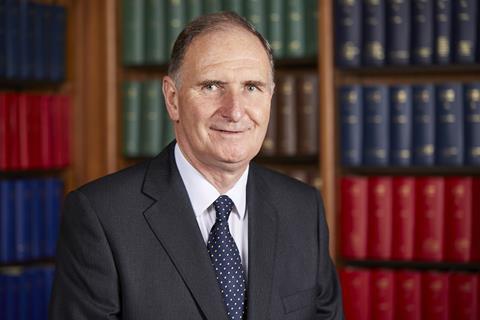The Supreme Court has appointed two recently-retired judges as justices, which critics have pointed out means that men called David now outnumber women by three to one on the UK’s highest court.
Lord Lloyd-Jones, who retired in January when he reached the mandatory retirement age of 70, has been re-appointed to the court after parliament increased the judicial retirement age to 75 through the Public Service Pensions and Judicial Offices Bill.
Supreme Court president Lord Reed said Lloyd-Jones will ‘continue to make an enormously valuable contribution to the court on a wide range of cases and especially in dealing with appeals in the field of international law and criminal law’.

Sir David Richards, who retired from the Court of Appeal at the age of 70 last June, has also been appointed as a justice of the Supreme Court to replace Lady Arden.
Reed said his ‘outstanding legal ability and breadth of experience, notably in company law and corporate insolvency, will maintain the court’s expertise in these areas following Lady Arden’s retirement’.
‘Both appointees will make a significant contribution to the work of the court and the development of the law, drawing on their extensive experience gained throughout their distinguished judicial careers,’ Reed added.
However, the appointments raised questions about the diversity of the Supreme Court, with public law silk Dinah Rose QC saying it is ‘disappointing’.
She said on Twitter that both Lloyd-Jones and Richards are ‘good and clever judges’, but added: ‘I strongly believe that all appointments should be made on merit. I just find it hard to believe that merit always looks the same.
‘Since its foundation in 2009, 28 men and 4 women have served on the [Supreme Court]. All have been white. These figures do not reflect the bar, legal academia or even the rest of the senior judiciary. The appointment process is completely opaque and strongly influenced by current judges.’
James Lee, a professor of law at King’s College London, pointed out that 69-year-old Lord Hodge is the oldest of the other current justices, saying: ‘This means that the next mandatory retirements will in fact be the new appointees – in 2026 and 2027!’
Fiona Rutherford, chief executive of the legal thinktank Justice, said: ‘Whilst we do not question the ability and experience of yesterday’s appointments, Justice is disappointed that the opportunity has not been taken to increase rather than reduce the diversity of our Supreme Court.’
She added: ‘Our Supreme Court continues to be an aberration among the leading common law jurisdictions, with women making up a third of the justices of the Canadian Supreme Court and Australia and New Zealand approaching, or at, gender parity on their highest courts.’
Rutherford also said that Justice’s concerns that ‘increasing the mandatory retirement age would negatively impact the diversity of the judiciary … appear to have been borne out’.
‘Justice has been looking at the issue of judicial diversity since 1972,’ she said. ‘Over the course of the past 50 years, not nearly enough has changed. Although we have seen some improvements, including the first female president of the Supreme Court, as the recent appointments show when it comes to judicial diversity it is one step forward two steps back.’
This article is now closed for comment.



























33 Readers' comments